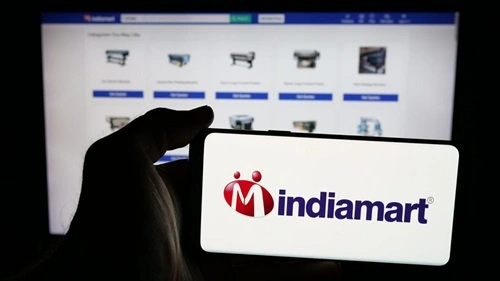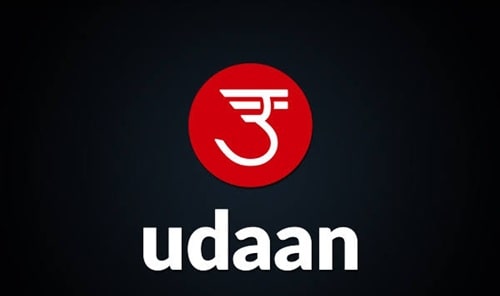If you go out there searching for the best B2B marketplace, then of course, you’ll come across the name of IndiaMart. Why? Well, it is the absolute best option in the Indian market for B2B needs. But since it is just a platform that links sellers and buyers, what good is it for IndiaMart itself? Like, how does IndiaMart make money? That’s the real question a lot of people are confused about, so let’s get to just that.

What is IndiaMART?
IndiaMART is one of the biggest online B2B marketplaces in India. It links buyers with sellers for nearly everything that includes not only machinery and tools but also packaging materials and clothing. In 1996, Dinesh Agarwal and Brijesh Agrawal initiated the platform, which is still based in Noida, Uttar Pradesh. IndiaMART’s concept is quite straightforward: facilitate business dealings for all parties.
| Company / Brand Name | IndiaMART InterMESH Limited |
| Establishment Year | 1996 |
| Headquarters | Noida, Uttar Pradesh, India |
| Founder / Owner | Dinesh Agarwal; Brijesh Agrawal |
| Industry | Online B2B marketplace (Internet services) |
| Net Worth (FY2024) | ₹1,736 crore |
| Total Revenue in 2024 | ₹1,197 crore (revenue from operations, FY2024) |
How the Platform Works?
Visualize IndiaMART as a huge directory powered with a messaging system. In such a system, buyers can look for the products they want or post their needed products, which is called Request for Quote (RFQ). Vendors can publish their products and answer these queries. IndiaMART connects the buyers to the sellers and delivers the leads to the vendors.
Typically, conversations, negotiations, and closing of deals occur off the platform. Working to attract being the main task rather than taking sales share is what is mainly done.
Where the Money Comes From?
IndiaMART makes the largest part of its money through suppliers. The site is free for buyers to use. It is also free for suppliers to list their products, however, a paid subscription provides them with more exposure and the potential to get more leads. The plans are graded according to the level of service like Silver, Gold, and Platinum and you can choose to pay monthly, yearly, or for multiple years. Upgrading your plan not only gives you a better position in the search results but also offers additional features such as:
- An online storefront
- Lead management tools (basic CRM)
- Cloud telephony for call tracking and privacy
In addition, suppliers are allowed to purchase additional “BuyLeads” credits, through which they can communicate with more buyers than the plan permits. Essentially, a mixture of paid subscriptions and extra lead credits is the main source of IndiaMART’s income.
Not a Commission-Based Marketplace
IndiaMART doesn’t extract a certain cut off every transaction. Buyers and suppliers negotiate directly, without the company’s intervention. The process is consequently efficient and less complicated because it does not require the management of warehouses, deliveries, or logistics.
Software Revenue
In 2022, IndiaMART made a significant acquisition in the form of Busy Infotech, a renowned company specializing in accounting software developed for the use of small, medium, and micro businesses, which maximizes the company’s potential, allowing it to offer these small enterprises affordable software solutions for better accounting and bookkeeping activities. In addition, the acquisition of Busy Infotech has facilitated the company to explore new revenue sources with the increasing demand for accounting software tagging along with the high expected growth rate of this market segment.
Cash Flow and Deferred Revenue
The major portion of paid plans is for either one or several years, meaning that IndiaMART receives the entire amount in cash at the beginning of the period. Then, the company goes on to acknowledge it as revenue over time. The money that has been received but not yet recognized as revenue is accounted for as deferred revenue. In FY2024, the total deferred revenue stood at approximately ₹1,440 crore, which increased to ₹1,678 crore in FY2025, indicating that the company had made a good amount of advance payments that will turn into revenue in the future.
Scale And 2024-2025 Performance At A Glance
IndiaMART’s consolidated revenue from operations was approximately ₹1,197 crore for the year ended March 31, 2024 (FY2024). By FY2025, it increased to nearly ₹1,388 crore, indicating a consistent rise in revenue. The sum of Capital & reserves (which can be considered as a measure of “Net Worth” or Shareholders’ Equity) was around ₹1,736 crores as of March 31, 2024.
Approximately 2.14 lakh suppliers were paid in FY2024 and around 2.17 lakh suppliers in FY2025. Additionally, the average revenue per user (ARPU) showed an upward trend as a greater number of suppliers transitioned to higher-value subscription plans.
What Makes the Model Work So Well
This pattern is effective because small and medium enterprises cherish consistent, suitable leads. A vendor pays a fixed fee and, in exchange, receives exposure, tools, and a flow of buyer queries. The highest paying levels (Gold and particularly Platinum) are the main source of income, as these customers get a high return on investment and usually have a long tenure. Gradually, improvements from Silver to Gold/Platinum increase the mean revenue per paying supplier.



